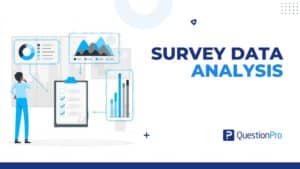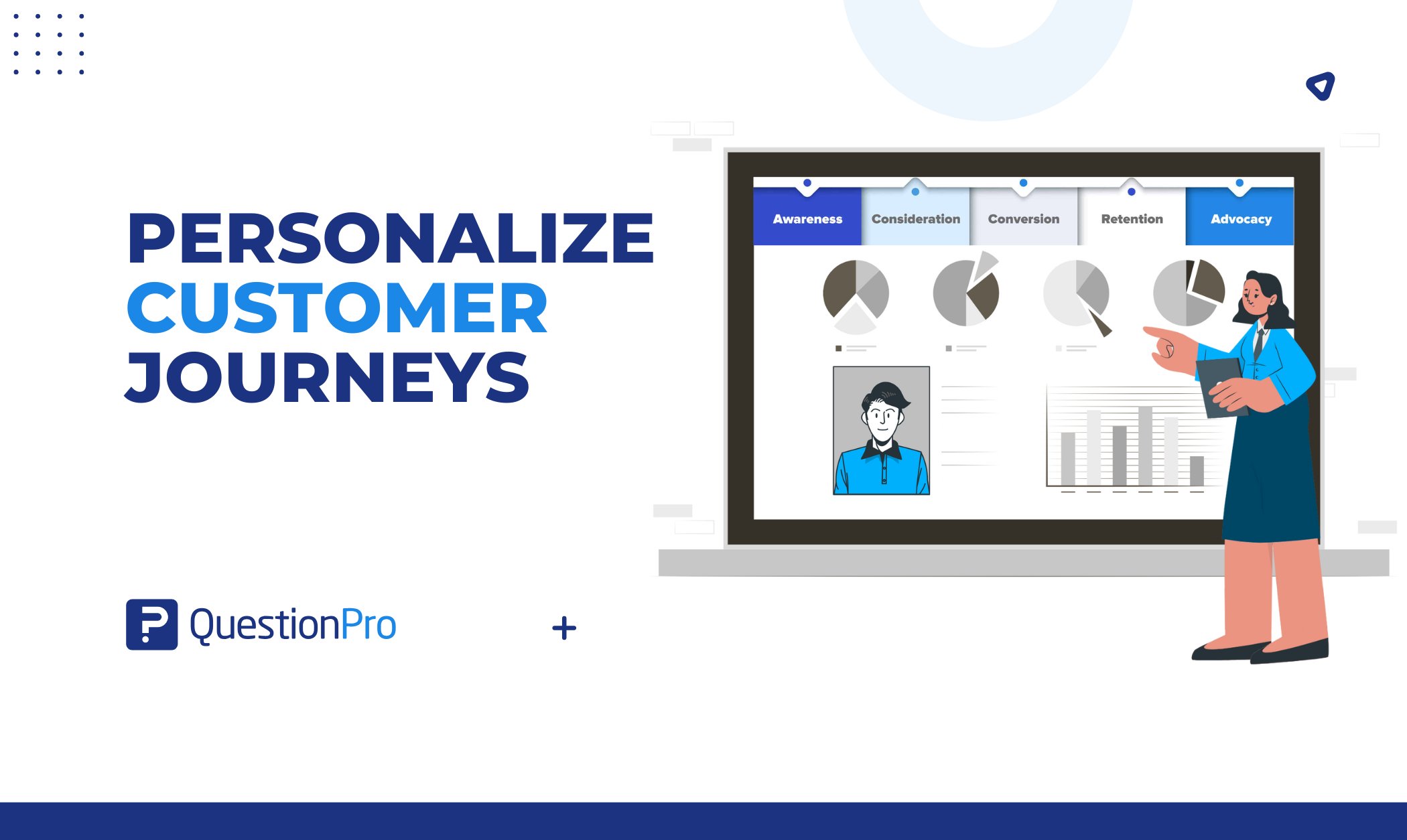
Every customer takes a unique path with your brand. Some discover you through social media, others through word of mouth, and many through countless touchpoints in between. Yet too often, marketers fail to personalize customer journeys and instead treat them as one-size-fits-all. The result is missed opportunities, low engagement, and customers who feel unseen.
Surveys are more than just feedback tools. It gives marketers a direct line into customer needs, motivations, and expectations. By collecting and analyzing this data, you can personalize customer journeys, transforming generic campaigns into tailored experiences that resonate at every stage from awareness to loyalty.
In this blog, we will explore how surveys drive smarter segmentation, fuel personalization strategies, and ultimately help marketers design journeys that feel less like marketing and more like meaningful connections.
What Is a Customer Journey and Why Does It Matter?
A customer journey is the complete experience someone has with your brand. It starts the moment they first hear about you and continues through every interaction until they become a loyal customer. Understanding this journey helps you see the key touchpoints where customers engage with your products, services, or marketing.
Customer journeys usually have 5 stages. These include:
- Awareness
- Consideration
- Conversion
- Retention
- Advocacy.
Each stage gives you a chance to connect with your audience in different ways. For instance, during the awareness stage, people may need helpful content or brand education. At the loyalty stage, they might respond best to personalized offers or exclusive perks.
Understanding the customer journey is important because it helps you identify opportunities to improve engagement and satisfaction at every touchpoint.
Surveys can provide insights into customer behavior and preferences. They help you identify gaps in the customer journey and prioritize actions based on this information. By using these insights, you can enhance the overall customer experience.
How to Personalize Customer Journeys Effectively
Personalizing customer journeys means customizing every customer interaction to match the needs, preferences, and behaviors of each individual. Instead of treating all customers the same, you deliver experiences that feel relevant and timely. This approach helps you connect with your audience on a deeper level and encourages them to engage more with your brand.
Each stage of the customer journey can be personalized:
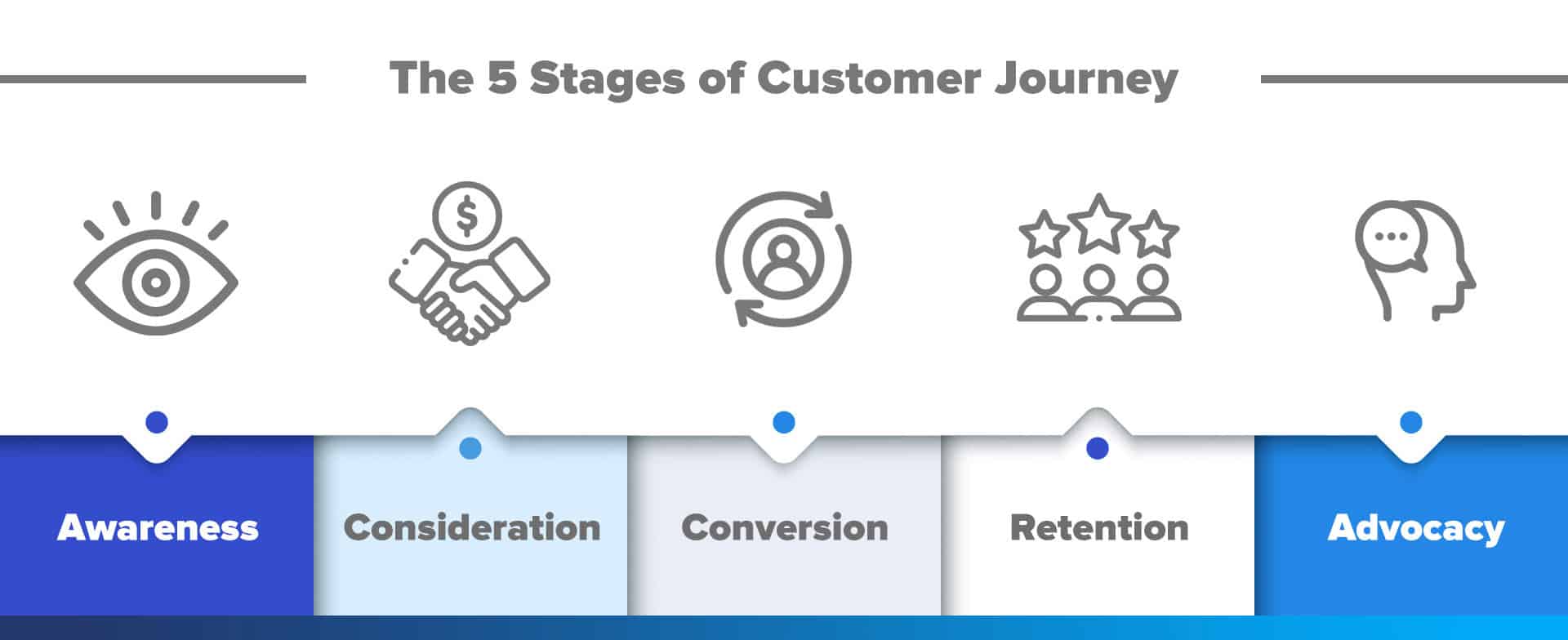
- Awareness Stage: Provide educational content that addresses common questions or concerns.
- Consideration Stage: Offer product comparisons or personalized recommendations to guide decisions.
- Conversion Stage: Share targeted promotions or relevant solutions to help customers make a choice.
- Retention Stage: Give exclusive offers, rewards, or recognition to retain customers.
- Advocacy Stage: Encourage referrals and feedback by providing proactive support and special incentives.
Personalization relies on data. Surveys are one of the most effective ways to collect information about what your customers want and need. By analyzing survey responses, you can segment your audience, understand individual preferences, and adjust marketing campaigns accordingly. This is why survey-driven customer insights are essential for creating personalized experiences.
The benefits of personalizing customer journeys are clear. Customers are more likely to stay engaged, make repeat purchases, and recommend your brand to others. Additionally, personalization allows you to optimize resources by focusing on strategies that resonate with specific groups rather than using generic messaging for everyone.
The Role of Surveys in Personalizing Customer Journeys
Surveys are a key tool for understanding your customers on a deeper level. Survey data can help you customize your messaging, offers, and experiences to meet the needs of each individual.
Using survey data for marketing ensures that your personalization strategies are based on real customer behavior rather than assumptions.
Why Survey Data Matters
Survey data is valuable because it helps you identify patterns across different customer segments. It can show which features or services customers value most and how they prefer to interact with your brand. Understanding these trends allows you to make informed, data-driven decisions that improve engagement and satisfaction.
Types of Surveys You Can Use
You can collect insights in several ways:
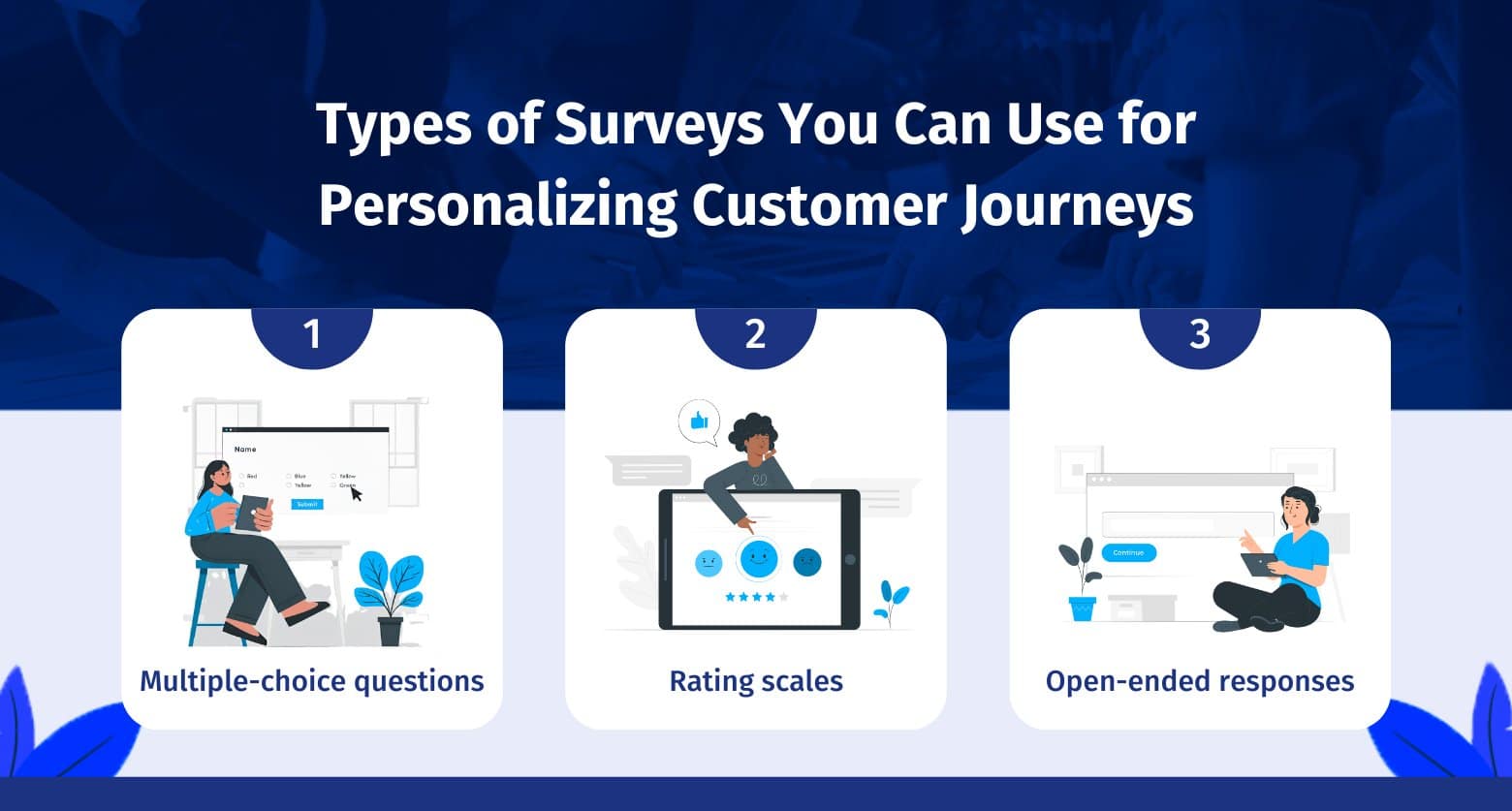
- Multiple-choice questions for quick, quantifiable feedback
- Rating scales to measure customer satisfaction or preferences
- Open-ended responses that uncover deeper motivations and suggestions
Each type of survey provides a unique perspective. By combining these approaches, you can gain a complete understanding of your customers and create campaigns and content that feel personalized and relevant.
Applying Survey Insights to Personalization
Once you analyze survey data, you can use it to adjust messaging, offers, and touchpoints for each stage of the customer journey. Insights from surveys can guide awareness-stage content, consideration-stage recommendations, and loyalty-stage engagement strategies.
Over time, consistently applying survey-driven insights helps refine campaigns, increase engagement, and create meaningful experiences that make your audience feel understood.
Step-by-Step Guide to Using Surveys for Customer Segmentation
Segmenting your audience is essential to delivering personalized experiences. By using customer segmentation through surveys, you can group customers based on shared characteristics, behaviors, or preferences. This allows you to focus your marketing efforts on what matters most to each group, rather than taking a one-size-fits-all approach.
Surveys provide the data you need to understand the differences between customers. They can reveal insights about demographics, interests, buying behaviors, and satisfaction levels. With this information, you can identify meaningful segments that guide customized messaging and campaigns.
Let’s explore the step-by-step approach to using surveys for segmentation:
- Step 1: Define Your Goals
Decide what you want to learn about your audience. Are you segmenting by demographics, purchase behavior, preferences, or engagement? Clear goals help you create questions that provide actionable insights.
- Step 2: Design Your Survey
Include a mix of question types such as multiple-choice for quantitative trends, rating scales to measure customer satisfaction or preferences, and open-ended questions for qualitative insights. This combination gives a complete picture of your audience.
- Step 3: Collect and Analyze Responses
Send the survey to your target audience and gather responses. Analyze the customer data to identify patterns that distinguish different segments. For example, one group may prioritize product features, while another values customer support.
- Step 4: Create Meaningful Segments
Group customers into segments based on shared traits or behaviors. Each segment should be actionable so that it informs how you communicate, offer products, or run campaigns.
- Step 5: Apply Insights to Personalization
Use the segments to deliver tailored content, recommendations, and offers. Continuously update segments with new survey data to keep personalization accurate and relevant over time.
Also Check: Top Customer Segmentation Tools to Power Up Your Business
Mapping the Customer Journey Using Survey Insights
Understanding how your customers move through your brand is essential to creating meaningful experiences. Mapping the customer journey allows you to see each touchpoint, from the moment someone first discovers your brand to the point they become a loyal advocate.
Using survey insights in this process gives you real data about customer preferences, motivations, and pain points. This ensures your journey maps are grounded in actual behavior rather than assumptions.
Why Survey Insights Are Critical
Survey data helps you uncover patterns in customer behavior that might otherwise go unnoticed. You can see which touchpoints influence decisions, which stages cause friction, and what drives customer satisfaction and loyalty. By integrating these insights into your journey mapping, you can identify opportunities to improve engagement and retention.
Key Steps to Mapping the Journey
Mapping the customer journey starts with understanding how customers interact with your brand at every stage. Survey feedback provides real insights, and by analyzing this data, you can create a journey map that reflects actual customer experiences.
To make the mapping process actionable, follow these key steps:
- Collect Survey Feedback Across Touchpoints
Gather responses from multiple interactions, such as post-purchase surveys, customer support follow-ups, or engagement polls.
- Organize Responses by Journey Stage
Segment the survey data according to the main journey stages. This helps you understand the unique needs and behaviors at each phase.
- Visualize the Customer Journey
Create a clear, visual map that highlights opportunities for improvement. A visual map makes it easier to communicate findings and guide decisions across your team.
- Apply Insights to Optimize Experiences
Use the survey-informed map to personalize messaging, offers, and support. Continuously update the map with new survey data to reflect evolving customer preferences and behaviors.
Personalizing Experiences with Survey-Driven Insights
Customizing experiences is about turning survey data into actionable personalization. When you analyze what customers say, you discover what matters most to each group, what frustrates them, and how they like to engage with your brand. With that insight, you can design messaging, offers, and interactions that resonate with customers at the right time.
Effective customization also means using data to anticipate needs. For example, survey insights can reveal that one group of customers prefers in-app guidance while another responds better to email recommendations. By aligning your approach with these preferences, you can increase engagement and satisfaction.
How Survey Insights Inform Personalized Marketing Campaigns
Survey data is valuable only when it informs actionable marketing strategies. Insights from surveys reveal which messages, offers, or channels resonate with different audience segments and help you determine the optimal timing and format for your campaigns.
Imagine you manage a clothing brand launching a new line of jackets. Instead of sending the same promotional email to everyone, you collect survey feedback about style preferences, materials, price sensitivity, and preferred shopping channels. This data allows you to craft marketing campaigns that are targeted and relevant.
Use survey insights to customize messaging and promotions for each segment.
- For eco-conscious customers:
- Promote jackets made from recycled materials.
- Highlight eco-friendly manufacturing processes.
- For premium-focused customers:
- Emphasize handcrafted details and superior stitching.
- Showcase limited-edition materials or designer collaborations.
- For deal-seekers:
- Offer “buy one, get one free” promotions.
- Provide exclusive early-access discount codes.
- Send personalized bundle deals based on past purchases.
Each message aligns with the segment’s unique preferences.
Monitor which emails or ads generate the most clicks, purchases, or engagement. For example, eco-conscious customers may respond better to video content showing sustainability efforts than to static images. Adjust your messaging, timing, and channels based on these insights to maximize results for each segment.
Best Practices for Designing Surveys That Drive Personalization
Well-designed surveys are essential for gathering insights that help you personalize customer experiences. By asking the right questions, you can understand customer preferences, which can guide segmentation and customized marketing strategies.
Surveys that are clear, focused, and timely provide accurate data and improve response rates. When designed properly, they become a powerful tool to drive meaningful personalization across the customer journey.
- Keep surveys short and focused.
- Use different types of questions.
- Collect feedback at relevant touchpoints.
- Ensure surveys are mobile-friendly and easy to complete.
- Regularly review and iterate your surveys.
Following these best practices helps you gather high-quality and actionable data. This data enables marketers to refine and create personalized experiences that resonate with each customer.
How SuiteCX by QuestionPro Helps Marketers Personalize Customer Journeys
SuiteCX by QuestionPro provides powerful survey and feedback tools that let you gather actionable insights directly from your audience. Using this platform, you can make data-driven decisions that improve engagement, loyalty, and satisfaction across every customer touchpoint.
SuiteCX goes beyond surveys by enabling you to design, visualize, and optimize customer journeys. Its customizable and secure platform integrates survey data, persona development, and journey mapping, giving you a complete view of your customers’ experiences.
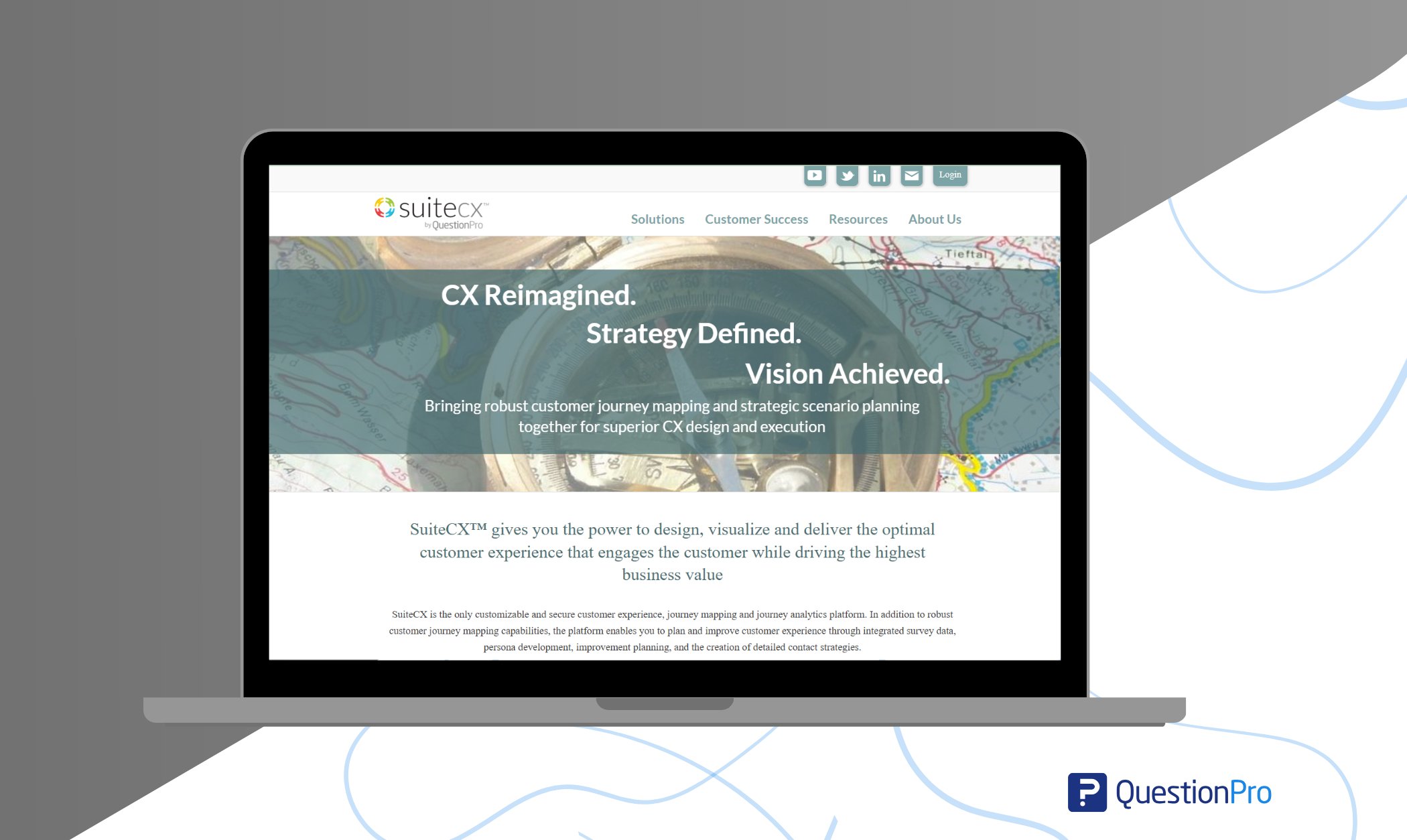
With SuiteCX, you can uncover silos, identify pain points, and translate insights into actionable strategies that enhance every stage of the journey.
Using SuiteCX, marketers can:
- Collect survey feedback to understand customer needs and motivations
- Map persona-based journeys to visualize touchpoints and interactions
- Assess CX programs to identify strengths, weaknesses, and improvement priorities
- Design personalized messages, offers, and experiences for each audience segment
- Continuously refine campaigns using real-time data and analytics
By leveraging SuiteCX, you can transform survey insights and journey analytics into personalized campaigns and experiences that truly resonate with your audience.
Turning Survey Insights into Personalized Experiences
Personalizing customer journeys starts with truly understanding your audience. Surveys are a powerful tool for understanding your customers and personalizing their journeys. By collecting feedback and analyzing survey data, you can create experiences that resonate with each individual rather than relying on generic messaging.
When survey insights are applied thoughtfully, they guide segmentation, personalized messaging, journey mapping, and campaign design. This approach ensures your marketing strategies are relevant, engaging, and effective across all stages of the customer journey.
With tools like SuiteCX by QuestionPro, marketers can seamlessly collect survey data, visualize customer journeys, and turn insights into actionable strategies. This empowers you to create truly personalized experiences that resonate with your audience, strengthen relationships, and drive long-term business success.
Frequently Asked Questions (FAQs)
Answer: Personalizing customer journeys means customizing interactions at every stage—awareness, consideration, decision, loyalty, and advocacy—based on customer preferences, behaviors, and needs. The goal is to deliver experiences that feel relevant and timely for each individual.
Answer: Surveys provide direct insights into customer motivations, pain points, and expectations. By analyzing survey data, marketers can segment audiences, tailor messaging, and design campaigns that resonate with each customer segment.
Answer: Effective surveys include:
1. Multiple-choice questions for quick, quantifiable feedback
2. Rating scales to measure satisfaction or preferences
3. Open-ended questions for deeper insights into motivations and suggestions
Answer: Survey insights help marketers identify which messages, offers, and channels perform best with specific audience segments. This enables targeted campaigns, personalized promotions, and better timing, resulting in higher engagement and loyalty.
Answer: Key practices include keeping surveys short and focused, using multiple question types, collecting feedback at relevant touchpoints, ensuring mobile-friendly design, and regularly reviewing and iterating surveys to maintain accuracy.
Answer: SuiteCX integrates survey feedback, journey mapping, and persona development in a single platform. It helps marketers visualize customer journeys, uncover pain points, segment audiences, and turn insights into personalized campaigns and experiences.




